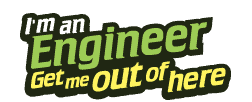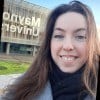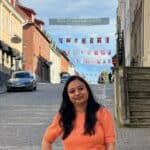Profile
Michael Nolan
We are keeping the science going during this time
-
About Me:
I am lucky to be a scientist and do the work that excites me – I find and show how to make new materials for future electronic devices like smartphones. I am also lucky to be able to help others in their journey to being scientists. And I get paid for it!
-
My pronouns are:
he/him
-
My Work:
Using large computers my group of researchers strives to get answers to some big questions:
(1) can we produce verrrrrry thin structures (as small as 1 atom thick) to make faster electronic devices and make your computers and phones run faster.
(2) can we make hydrogen from water #
(3) can we use wasted carbon dioxide to make fuels
(4) can we make slippy materials that show no friction to use in your computer mouse
(5) can we replace chemicals and materials that are harmful to the environment
-
Read more
My primary interest is in applying simulation tools to materials, in particular in the following research themes:
Metal Oxides in Renewable Energy Applications. We have had Science Foundation Ireland support in Renewable Energy Applications, in which we investigate metal oxide heterostructures composed of a nanscale metal oxide cluster adsorbed on TiO2 surfaces (rutile and anatase). A number of heterostructures have been investigated, among which TiO2 clusters adsorbed at rutile (110), FeOx clusters also adsorbed at rutile (110) and CrOx clusters adsorbed at rutile (110) show reduced band gaps compared with pure TiO2, which will induce visible light absorption. The heterostructure also allows for charge separation upon light excitation, thus making these structures potential visible light active photocatalysts. A recent collaboration with Prof. H. Tada in Japan, who synthesises these systems, shows excellent agreement between the calculations and the experiments.
Electronic Structure of metal oxides. Since 2003, we have been applying DFT to the study of the electronic structure of reducible metal oxides, primarily cerium dioxide and titanium dioxide. For ceria, we provided the first consistent description of the reduced surfaces (in which an oxygen vacancy is present) whereby reduced Ce3+ ions are formed, which are notoriously difficult to treat with standard DFT approaches. The dependence of the reactivity on surface structure, as measured by the oxygen vacnacy formation energy, has been investigated. We have also presented a number of studies in recent years on the eletronic structure of doped ceria (in which Ce ions are substituted for another metal cation, e.g. Ti, La or Pd) and investigated the effect of this on the reactivity of ceria.
Catalysis on metal oxides. For ceria, we have explored the adsorption of small molecules such as CO and NO2 at oxidised and reduced ceria surfaces, both undoped and doped. Our work on the adsorption of both molecules at different ceria sufaces clarified for the first time a number of important points, including (i) the effect of surface structure on reactivity: CO only physisobrs at the (111 )surface, both chemisorbs, forming a carbonate, at the (110) and (100) surfaces, (ii) once Ce3+ ions are present, NO2 will react strongly, with charge transfer from the reduced surface to the molecule, with dissociates, (iii) doping othe surface, especially (111), can be used to enhance CO oxidation, buth without harming NO2 reduction.
-
My Typical Day:
I lead a research grou with 12 people and am a member of the instition’s Leadership Team. I also do a number of other roles important to the research community including: selecting scientific papers for publication, reviewing research grant proposals to decide if they should be given the money, mentor other researchers, manage scientific aspects of our national supercomputing service.
My typical day involves discussions and meetings with my team members and colleagues from all over the world, which is a real a highlight of my job.
I manage a number of active research projects to ensure they are making progress and on track.
I write scientific papers describing our work and prepare presentations to a broad audience including other researchers, students, industry colleagues.
-
Read more
My typical day involves
Working with team members on setting up, checking and analysing results of simulations.
I have to decide if the results are meaningful.
I write papers describing this research
I prepare and give presentations to inform other people
I particularly like discussions of my work with colleagues all over the world.
I wrote proposals to secure funding to allow this work to be done
The best part: travelling abroad to present my work and meeting colleagues. -
What I'd do with the prize money:
1. Buy a leather jacket with tweed patches…no, wait….
2. Use the remaining funds to pay for materials that can be used as part of regular visits to schools or school visits to Tyndall. Part of this would be molecular modelling kits to allow people see what molecules and materials look like.
-
Read more
Every scientist needs a leather jacket with tweed patches, or is that a tweed jacket with leather patches…especially if you are visiting schools and want to be taken seriously.
I would use the funds to pay for visits (and associated materials) to schools that would be interested in hearing more about what scientists do
-
Education:
Colaiste Phadraig, Lucan, Co. Dublin 1988 – 1993.
Dublin City University, Dublin 1993 – 1997. (Chemistry Degree)
University of Leipzig, Germany, 1995 – 1996,
University College Cork 1997 – 2003 (Masters and PhD)
-
Qualifications:
Degree: Chemistry with German,
Masters: Electronic Engineering,
PhD: Microelectronic Engineering
Postgraduate Teaching Certificate
-
Work History:
I have worked at (1) University of Leipzig, Germany and (2) Trinity College Dublin
-
Current Job:
Head of Resarch Group and Member of the Leadership Team (Tyndall Institute)
Editor of two scientific publications
-
Employer
Tyndall National Insitute, University College Cork
www.tyndall.ie
-
My Interview
-
How would you describe yourself in 3 words?
Motivated, versatile, hard-working
What was your favourite subject at school?
Chemistry and Maths
What did you want to be after you left school?
An organic chemist!
Were you ever in trouble at school?
Yes, for only getting 99% in an exam
If you weren't doing this job, what would you choose instead?
I honestly do not know, probably shuffling (electronic) paper in an office
Who is your favourite singer or band?
Iron Maiden
What's your favourite food?
Fish
What is the most fun thing you've done?
Travel the Rocky Mountains
If you had 3 wishes for yourself what would they be? - be honest!
1. To discover the best way to make the materials needed for future computing 2. Finding a cheap material that can capture and tturn carbon dioxide into useful chemicals 3. To travel to the south pole
Tell us a joke.
A man walks into a bar… Ouch!
-




